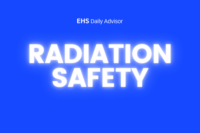Safety is a process, and as such, needs to be managed. This section offers resources to create a viable safety program, sell it to senior management, train supervisors and employees in using it, and then track and report your progress. Look also for ways to advance your own skills in these areas, both for your current job, and those that follow.
Free Special Report: 50 Tips for More Effective Safety Training
In this installment of EHSDA Shorts, Jennifer Hsu, MPH, CSP Senior Leader in Environmental, Health, and Safety (EHS) | Certified Safety Professional (CSP), shares her thoughts on ordering personal protective equipment (PPE) for women. This clip was taken from a webinar titled “Creating an Inclusive PPE Program: Connected Tech, the Right Fit, and Change Management.” […]
In cases where Legionella hazards can’t be controlled with engineering and administrative controls, personal protective equipment (PPE) may be needed to prevent worker exposures and infections. Here’s what you need to know about how to protect workers against Legionella exposure with PPE.
In an era dominated by technological advancements, artificial intelligence (AI) is set to transform how workplace safety is managed. Currently, a workplace injury occurs every six seconds and every 1.8 hours, a life is tragically lost due to workplace accidents. Despite these alarming statistics, the procedures for monitoring and reporting on workplace safety remain archaic, […]
On episode 204 of EHS On Tap, Jo Pina, vice president of EHS at Verde, talks about the increased importance of safety professionals.
Back to Basics is a weekly feature that highlights important but possibly overlooked information that any EHS professional should know. This week, we examine how to control and prevent the growth of Legionella bacteria in your water systems. Legionellosis, which can lead to Legionnaires’ disease and Pontiac Fever, is spread primarily through inhaling Legionella-contaminated, aerosolized water. […]
Chicago-area subcontractor K.L.F. Enterprises faces $392,002 in Occupational Safety and Health Administration (OSHA) fines for exposing its employees and others to asbestos during the structural demolition of a Waukegan, Illinois, hospital, the agency announced May 15. Agency investigators observed K.L.F. employees not wearing protective equipment amid piles of debris and steel I-beams during the structural […]
Radiation emergencies include nuclear and radiological events in which there is (or there is the perception of) a hazard from a nuclear explosion, release of radioactive material, or unintended exposure to another type of radioactive source. Here’s what you need to know about radiation safety.
On episode 203 of EHS On Tap, Shawn Galloway, CEO of ProAct Safety, talks about the recent safety trends that keep him up at night.
The California Occupational Safety and Health Standards Board meets May 16 to consider readopting the state’s emergency temporary standard (ETS) for occupational exposures to respirable crystalline silica. The board adopted an ETS on December 14, 2023, which became effective December 29, to protect workers in the stone fabrication industry from silicosis. California’s permanent silica standard […]
The Advisory Committee on Construction Safety and Health unanimously recommended that the Occupational Safety and Health Administration (OSHA) move forward with a notice of proposed rulemaking (NPRM) for a federal heat exposure standard, the Department of Labor (DOL) announced May 8. In 2021, the agency issued an advance notice of proposal rulemaking (ANPRM) on heat […]










